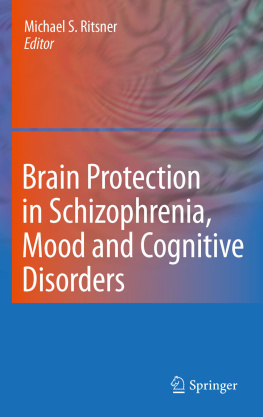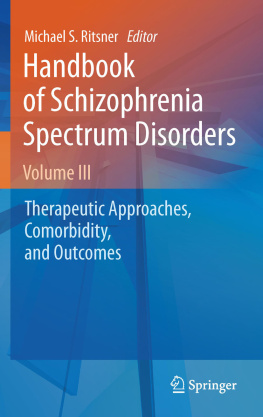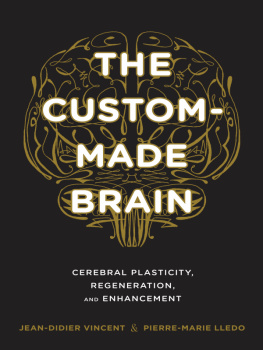Michael S. Ritsner (ed.) Brain Protection in Schizophrenia, Mood and Cognitive Disorders 10.1007/978-90-481-8553-5_1 Springer Science+Business Media B.V. 2010
1. Brain Protection in Neuropsychiatric Disorders: Past, Present and Future Challenges
Abstract
Brain- or neuroprotection is any therapy that prevents, retards, or reverses neuronal cell death resulting from neurodegenerative processes. In the past neuroprotection has been an active field of research in medical areas ranging diversely from neurology through cardiology to ophthalmology. However, it has only been in recent years that the psychiatric community began to sit up and take notice be it due to improved technological imaging capabilities or because of the growing dissatisfaction with current pharmacological treatments (particularly in schizophrenia) regarding negative and cognitive symptom domains, second generation antipsychotics included. Mounting evidence indicates that neuropsychiatric disorders such as Parkinsons disease, amyotrophic lateral sclerosis, multiple sclerosis, epilepsy, schizophrenia, mood and cognitive disorders all have a neurodegenerative component proposed to be due to various mechanisms including oxidative stress, mitochondrial dysfunction, excitotoxicity, myelin dysfunction and apoptosis to name just a few. New and improved imaging techniques combined with advanced cognitive testing continue to help us assess this degenerative component. However, despite considerable research effort, clinical trials in search of an agent that can effectively protect the brain of patients with schizophrenia, mood and cognitive disorders have been largely disappointing as of yet. Thus, it would seem that the continuing search for neuroprotective factors in psychiatry would be especially pertinent for finding novel treatments and augmentation strategies not only for treating active symptoms, but also for slowing down disease progression and possibly even providing primary prevention in recognized prodromal states. As of now several drugs, hormones, neurosteroids, vitamins as well as various other substances have been studied regarding their neuroprotective properties in psychiatric disorders, with variable amounts of success. Other neuroprotective approaches being studied include the utilization of nanotechnological scientific advances as well as neuromodulatory techniques (such as transcranial magnetic stimulation, vagal nerve stimulation and deep brain stimulation).
In this chapter we will review the trends in psychiatric neuroprotection in the past and the present in addition to raising questions for future directions and challenges. The present overview will cover the evidence concerning the different theoretical frameworks regarding the basis of psychiatric neuropathology and specifically their applicability to the field of neuroprotection. The different classification possibilities of neuroprotective candidates are also discussed. Finally, we will propose using a separate term in an attempt to differentiate psychiatric neuroprotection from other forms of neuroprotection psychoprotection.
Keywords
Neuroprotection Neurodevelopment Neurodegeneration Dysconnectivity Brain volume Neurosteroids Erythropoietin Estrogen Cannabis Schizophrenia Bipolar disorder Major depressive disorder Diffusion tensor imaging Functional magnetic resonance imaging Vagal nerve stimulation Transcranial magnetic stimulation Deep brain stimulation Nanoneuroscience Psychoprotection
1.1 Introduction
Neuroprotection is a term commonly used to refer to any type or therapeutic modality, usually pharmacological, that can prevent, delay or even reverse neuronal damage, whether it be neuronal death, axonal degeneration or any other form of neuronal injury [].
Fig. 1.1
The Fountain of Youth by Lucas Cranach the Elder, 1546 (public domain)
With this multitude of putative products purported to slow down aging and delay neural degeneration it is becoming increasingly difficult to sort out which of these has actual scientific basis. In fact, the very notion of neural regeneration and brain plasticity would have seemed preposterous in the not so distant past. However today there are literally hundreds of products being investigated within the scientific community specifically for their neuroprotective potential [].
When approaching the subject of neuroprotection in psychiatry, we first need to address the issue of nosology. When Emil Kraepelin offered the categorical phenomenological construct of psychiatric diseases a century ago, he put the deteriorative degenerative nature of schizophrenia within its very name: dementia praecox []. Thus, the search for neuroprotection in psychiatry can have a potentially far more outreaching scope than previously thought in as much as the focus may shift from schizophrenia to the entire mental health spectrum.
1.2 A Brief History of Neuroprotection
Although the focus of this book is primarily about brain protection in psychiatric disorders, the evolving field of psychiatric neuroprotection is in essence situated on a continuum stemming from previous neuroprotective research of other various disciplines. Thus, it is of value to briefly summarize these first before we expand on psychiatric neuroprotection so as to gain a wider understanding of the mechanisms involved.
The origins of modern neuroprotective research date back to the late 1980s and initially focused on neurological disorders exhibiting extensive neuronal damage [].
The burgeoning field of neuroprotection is not restricted to conventional pharmacological trials alone. With the advancing sciences of nanotechnology [.
Considering the extent of research conducted in the fields of neuroprotection and neuroregeneration there is a clear need for organizations aiming at providing researchers with information, sponsorship and advice, as well as offering a gateway for collaborative ventures. Currently there are at least two such organizations: The Global College of Neuroprotection and Neuroregeneration, founded by Russell Pendleton, London, UK and Professor Hari S. Sharma, Uppsala, Sweden in 2004 [), which became an affiliated organ of the GCNN.










